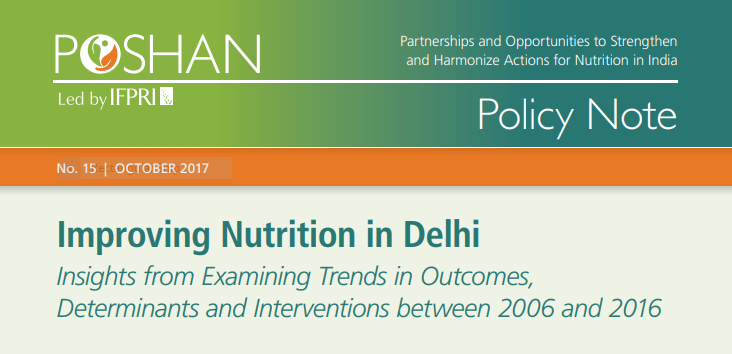The National Capital Territory (NCT) of Delhi is divided into nine districts for administrative purposes. As of 2011, Delhi accounted for 1.4 percent of India’s population (Census of India 2011) and had 9.9 percent of its population living under poverty line (Planning Commission, 2013). Delhi has the highest density of population in India with 11,320 people living per square kilometer. Between 2001 and 2011, its urban population increased by 26.8 percent while rural population declined by 55.6 percent, making it the state/union territory with the largest proportion of urban population (97.5 percent).
The purpose of this Policy Note is to examine the trends in undernutrition in Delhi and to document trends and geographic variability in the major determinants of nutrition and the coverage of key nutrition and health interventions. In doing this analysis, we aim to highlight the key areas of action to improve nutrition in Delhi.



